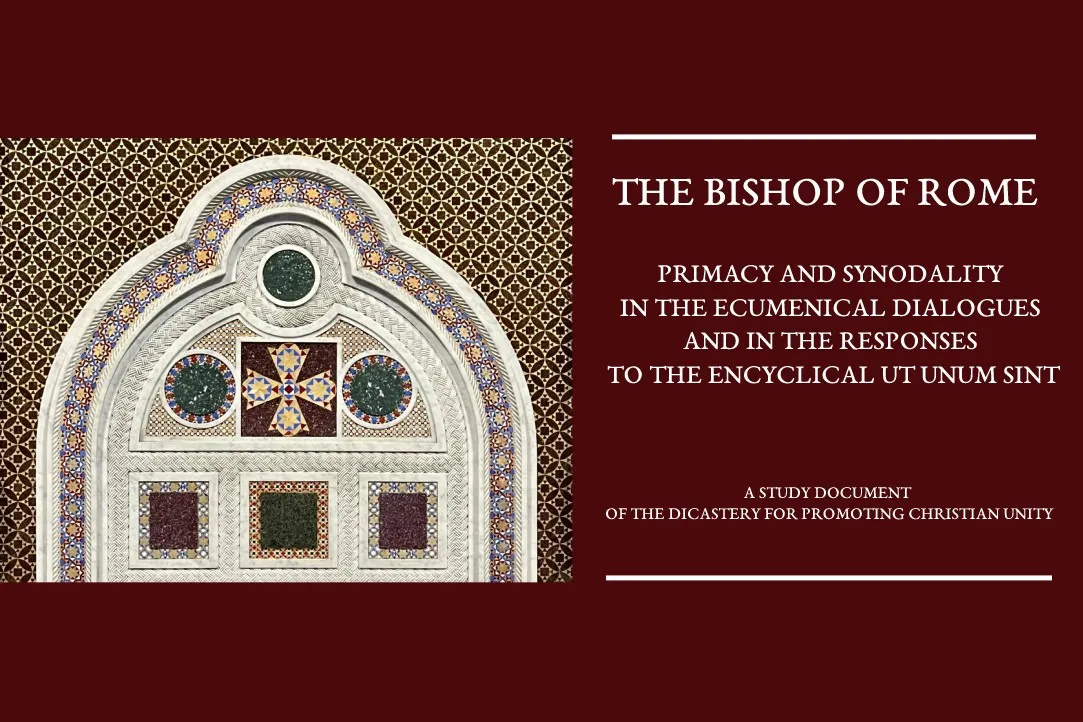On the feast of St. Anthony of Padua (June 13), I had the pleasure of visiting St. Peter’s Basilica in Rome with some dear friends. Although I had taken similar tours before, I always find new insights into the rich history of the Church and the pivotal role of the Petrine ministry throughout the ages. As we stood atop the Dome of St. Peter’s—the highest point in the city—I couldn't help but discuss the significant work carried out here for the Church's mission worldwide. Despite not being a mystic nor a saint, I had an inexplicable sense that something profound was unfolding beneath us.
Later that day, I received a notification about a new study document from the Dicastery for Promoting Christian Unity titled “The Bishop of Rome: Primacy and synodality in the ecumenical dialogues and responses to the encyclical Ut Unum Sint.” Though I am a simple missionary priest from Northwest Detroit, those who know me well understand my deep commitment to Christian unity. Therefore, I would like to share my thoughts.
The Origins
The Gospels clearly depict Jesus sending His apostles and disciples into the world, emphasizing his desire for their unity, reflecting the oneness He shares with the Father. This unity was meant to be so profound that those who heard the Gospel could see in the apostles a reflection of the unity between the Son and the Father.
Additionally, the Gospels recount how Jesus entrusted a special task to one of his apostles, Peter (Petrus), symbolizing him as “the Rock.” Peter, an older, likely married fisherman, was a man of deep faith, leaving everything to follow Jesus upon their first encounter. Peter's humanity is vividly portrayed in the Scriptures—his denial of Jesus before the crucifixion, his stubbornness, his fear of spreading the Gospel to the Greek-speaking world, and his correction by Paul, another apostle renowned in the early Church.
These accounts highlight Peter's reliance on God's grace and the guidance of the Holy Spirit. I often think of Peter as a fatherly figure, humbly accepting his shortcomings and trusting that God would use them for his greater glory. Peter exemplified pastoral and spiritual leadership by allowing the Lord to refine him, becoming fully dedicated to the mission entrusted to him.
The Mission
What is the historical role of the Bishop of Rome, and how does it apply to us today? This context underscores the importance of the new Vatican study document.
The Church is “one, holy, catholic, and apostolic.” Yet, over the centuries, divisions in doctrine and practice have emerged. While God's grace can transcend these divisions and draw people to him, they nevertheless hinder the Church's mission to foster unity among diverse ethnicities and cultures. We must return to our apostolic roots, emulating the early apostles' mission after the Lord's Ascension and the descent of the Holy Spirit. Their mission and ours today are essentially the same: to proclaim the same crucified and risen Lord Jesus Christ by the power and inspiration of the Holy Spirit. Despite this, divisions persist, and obstacles to full unity exist on all sides.
The Role of the Petrine Ministry
The study document explores various ways the Petrine ministry can foster unity with the Eastern Churches (and other Christian communities) in our contemporary context. Here are a few key points that stood out to me:
- Exercising Authority as Diakonia: Authority should be viewed as a service to the community, both locally and universally. The Roman pontiff, along with all bishops, exercises his ministry not as a means of dominating others or for personal gain. Rather, they embody a spirit of humble service, following the example of the Lord who went to the cross out of profound love for His people. In this role, the pontiff, as the bridge-builder, selflessly sacrifices himself for the welfare of the people of God
- Differentiating Roles within Peter's Office: The Bishop of Rome has three principal responsibilities:
- Diocesan Bishop of Rome, who, according to St. Irenaeus, “presides over the churches in charity.”
- Patriarch of the West.
- The primatial ministry, which encompasses the universal responsibility of confirming the faith and serving as a sign of unity among the churches.
- Autonomy for the Eastern Churches: It's crucial that the Eastern Churches retain autonomy. I have always believed that unity with the Orthodox and Oriental Churches cannot be achieved by subjecting them to reporting to the Vatican’s Dicastery for the Eastern Churches. They would need much more involvement with the universal mission of the Church in communion with the Bishop of Rome.
- Harmonizing Petrine Primacy and Synodality: These concepts must coexist on local, regional, and international levels. While synodality is an ancient practice, understanding its relationship with the office of Peter will take time, especially in the West, where unfortunately many may not even be familiar with the concept of synodality. In contrast, the role of Petrine primacy is more widely recognized. Synodality certainly is a concept that has been used in the East for centuries.
- Equal Standing for Eastern Churches: Eastern Churches should operate on the same international level as the Latin or Western Church, with a presence as ubiquitous as Western parishes in various corners of any city or region throughout the world.
I encourage you to read the new study document and reflect on how its principles can be integrated into your own ministry, fostering genuine communion and unity. Remember, the Lord’s command for us to be one is a calling for all of us to embrace and embody for his greater glory.
Fr John M. McKenzie is a priest in solidum, serving the Archdiocese of Detroit within the D4 Mission Family of Parishes. He primarily serves at Christ the King Catholic Church and School. Prior to entering the seminary, he was a Benedictine monk in Italy.









